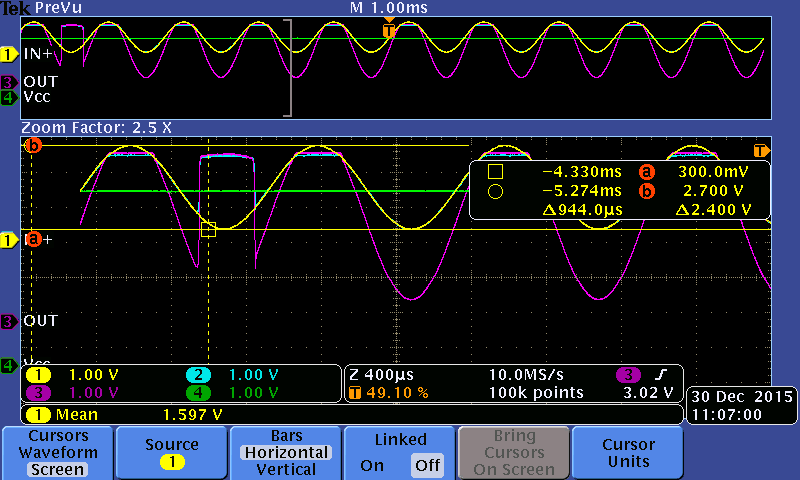Hi,
we are using LMV931 RRIO opamp to buffer a signal. The fb loop is closed remotely through a cable. It appears that when we open the loop (bad contact) some will latch-up near rail (4.4V at supply 5V) and never recover once the loop is closed back. Since the opamp is RRIO (200mV above supply) I would have assumed that even if opamp is forced to saturate near rail when loop is opened, it would not latch-up and recover once faulty condition is removed. The vast majority that have seen will recover though, but we have some samples that will not.
Anyone can help understanding the issue?
Thanks,
JR


